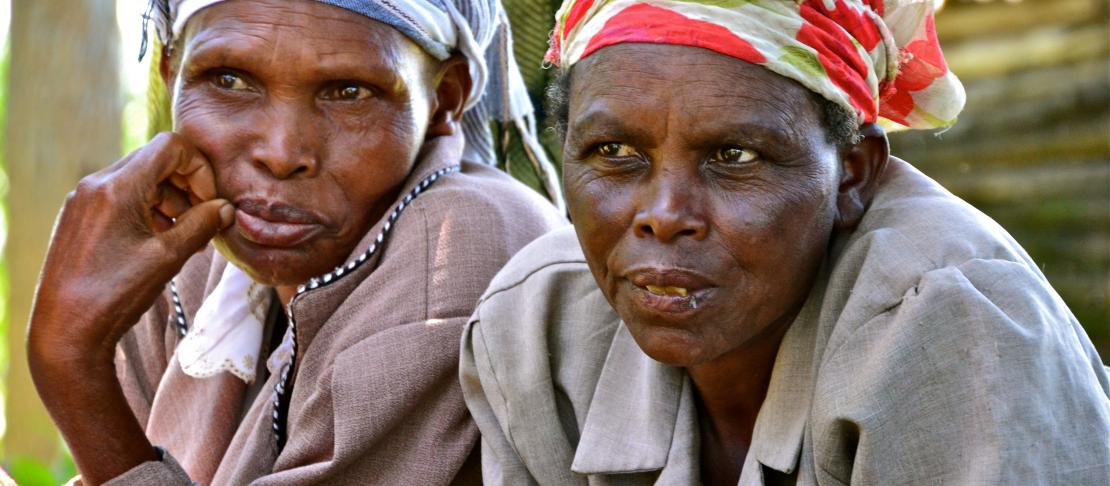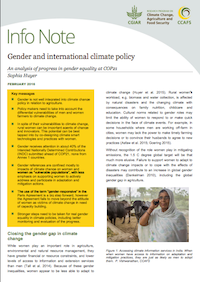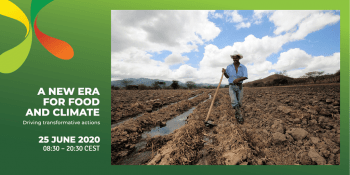Gender and climate change policy after COP21

A more food-secure and fair world in sight if the new climate deal truly engages with women farmers.
Join the webinar: Gender considerations in today’s post COP 21 environment: what’s missing?
Date: February 22, 2016, Time: 10:00 a.m. EST
info note
It’s a hard life for women farmers in developing countries, and mounting temperatures will make it even harder. Gender inequality means that women are more affected by climate change than men.
Agriculture is a fundamental part of women’s livelihoods in least developed countries, where four-fifths of economically active women report agriculture as their primary economic activity. Yet only a small proportion of these women hold land titles. For example in Uganda, six out of ten women do not own land, as customary rights and tradition still prevail against the recent land policy giving equal land rights to men and women. Having fewer assets means they invest less to improve their farm’s resilience and productivity.
Women and families are caught up in a vicious circle that traps them in greater poverty and climate vulnerability
Women usually have a much higher burden of water collection than men, especially in rural areas. In Malawi for instance, a woman will spend about one hour daily for water collection compared to only 6 minutes for a man. Imagine the greater distance many women and young girls now have to walk to collect water for their family in this country, as the El Niño climate cycle has caused severe ongoing drought. This is time diverted away from childcare and education, food production or missed opportunities to learn and test climate adaptation techniques. Women and families are caught up in a vicious circle that traps them in greater poverty and climate vulnerability.
Despite the crucial role of women to feed the family and manage local natural resources, gender inequalities exist in the face of climate change, especially in the agriculture sector. On average, women are less able to cope with repeating climate disasters and adapt to climate change because of resource or cultural constraints as well as lower levels of access to information and extension services. The gender gap in agriculture has to be addressed if we want rural communities be more climate resilient.
Effective climate change policies must be gender sensitive
For quite a while now the international development community has acknowledged that gender is a key dimension for addressing development issues ranging from poverty reduction to the fight against malnutrition. This is also true for climate change.
In 2001, the Intergovernmental Panel on Climate Change officially stressed that climate change impacts women more than men. However, fifteen years later, a review of climate change policies and institutions from the CGIAR Research Program on Climate Change, Agriculture and Food Security (CCAFS) reveals that gender is still not well integrated. While the greater vulnerability of women is well documented, their role to design and implement effective climate mitigation and adaptation strategies for themselves and their family is not recognized enough.
If we look at the climate change negotiation process in the last two years, efforts within the UN Framework Convention on Climate Change (UNFCC) to address gender inequality are real, but progress is slow. In December 2015, COP21, also known as the 2015 Paris Climate Conference, aimed to achieve a legally binding and universal agreement on climate. Yet only 40% of the 160 parties of the COP21 made gender references in their Intended National Determined Contributions (INDCs) – none of whom were from the industrialized countries. As these countries will be the main contributors of climate financing, we can wonder how future climate adaptation and mitigation initiatives will take gender into account.
To ensure that the “gender-sensitive approach” promoted by the Paris climate agreement in December 2015 becomes a tangible reality, concrete actions to engage with women are needed. This is particularly true for the agriculture and food security sector.
The first step is to identify the differentiated constraints and priorities between men and women. Researchers have to be gender aware when assessing the perceptions and impact of climate change on rural households. The picture may be radically different from a woman’s perspective which means that solutions may be very different.
Women can drive crucial change if they become real partners of the new climate deal
New technologies and practices to mitigate and adapt to climate change will be adopted more successfully within rural communities when they are appropriate to women’s interests, resources and demands. Adoption of new drought-tolerant crop varieties is greater when women farmers participate in the varietal selection, integrating local preferences such as the ‘poundability’ of yam or cassava, the cooking time or ease of harvesting chickpea grains. As feeding the family is the woman’s domain, scientists have found that culinary testing of new varieties is a successful way to engage with women farmers and it is now routinely integrated into CGIAR crop improvement programmes.
In Honduras’ coffee region, women have re-designed clean biomass cookstoves that halve firewood consumption. They also experimented with crop diversification in demonstration shade-grown agroforestry plots they managed themselves, introducing plantain, avocado or new tree species valuable for timber or nitrogen fixation. Remarkably, the engagement of men in such women-led activities enabled slow, organic changes in gender relations within the implementing organization, farmers’ organizations and households. Experimenting together has strengthened social solidarity and skills in the households and community to tackle other issues such as land disputes.
Political will needed to enforce gender parity and inclusion in the climate deal
The UNFCCC Women and Gender Constituency has called for a true gender sensitive climate change agenda. One way forward would be to systematically request a gender component as a qualifying criterion to access international funding such as REDD+, the Green Climate Fund, the Clean Development Mechanism, Global Environment Facility, Adaptation Fund and Nationally Appropriate Mitigation Actions (NAMAs).
Imposing ‘gender parity’ (this year’s theme for Women’s Day), in all climate institutions would also be a strong message, as women’s representation currently varies from 40% to as low as 6% across the different UNFCC bodies.
Above all it is important that researchers, development practitioners and policy-makers design climate programmes and policies that integrate women’s and men’s needs and priorities. Gender inclusion in climate mitigation and adaptation programmes has to be monitored and assessed systematically through gender-sensitive indicators such as increased control of land and productive assets by women.
At the upcoming UNFCCC workshop on gender and adaptation in June 2016, part of the Lima Work Programme on Gender, or while submitting their inputs to the Subsidiary Body for Scientific and Technological Advice (SBSTA 44), we hope countries will demonstrate a true intention to let women speak for themselves.
Read more
- Info note: Gender and international climate policy
Jerome Bossuet is a communications specialist. Sophia Huyer is the Gender and Social Inclusion Flagship Leader at CCAFS.




